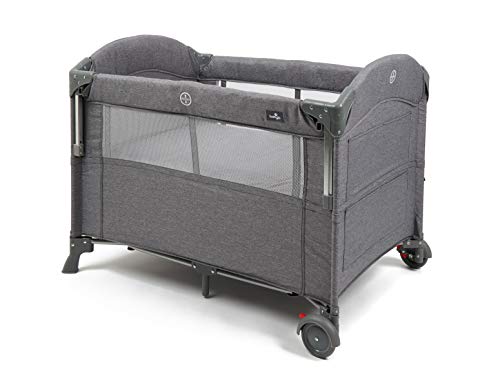The Ultimate Guide to Choosing a Baby Cot Bed: Safety, Features, and More
When it concerns inviting a new baby, one of the most crucial purchases parents will make is a baby cot bed. Cot Newborn of furnishings is not only where a baby will sleep; it's also a space of convenience, security, and security. Offered the wide range of alternatives readily available on the market today, making a notified decision can be overwhelming. This guide aims to streamline the process by covering important functions, safety requirements, types of cot beds, and far more.
Table of Contents
- Intro
- What is a Baby Cot Bed?
- Safety Standards
- Kinds Of Baby Cot Beds
- 4.1 Traditional Cots
- 4.2 Convertible Cot Beds
- 4.3 Portable Cots
- Secret Features to Consider
- Selecting the Right Mattress
- Establishing the Cot Bed
- Frequently asked questions
- Conclusion
1. Intro
A baby cot bed functions as a dedicated sleeping area for infants and is created to supply convenience and security. As brand-new moms and dads navigate the various choices readily available, it is crucial to understand the different types of cot beds, safety guidelines, and necessary features to make the best selection.
2. What is a Baby Cot Bed?
A baby cot bed is a customized piece of furnishings where babies sleep. Unlike routine beds, cot beds are particularly developed for babies and supply a safe environment for them to rest. They normally include high sides to avoid infants from falling out and often featured adjustable bed mattress heights to accommodate a growing child.
3. Security Standards
When selecting a baby cot bed, safety ought to be the primary factor to consider. Here are some vital security requirements to bear in mind:
- Certification: Ensure the cot bed fulfills national and global safety requirements, such as the ASTM International and Consumer Product Safety Commission (CPSC) policies.
- Slat Spacing: The range in between slats ought to not go beyond 2 3/8 inches to prevent the baby's head from slipping through.
- Stability: Ensure that the cot bed does not wobble or shake.
- Non-Toxic Materials: Check for non-toxic surfaces and products to guarantee the baby's security.
4. Kinds Of Baby Cot Beds
The marketplace offers different kinds of cot beds, each dealing with different requirements. Below is a summary of the most typical types:
4.1 Traditional Cots
Traditional cots are standalone furniture items developed specifically for infants. They generally feature repaired sides and numerous adjustable bed mattress heights.
4.2 Convertible Cot Beds
Convertible cot beds can be changed into young child beds, permitting extended use. This type is an economical choice as it grows with your child.
4.3 Portable Cots
Portable cots, likewise called travel cots or playards, are lightweight and created for families on the go. They can be quickly put together and dismantled for travel.
5. Key Features to Consider
When selecting a cot bed, parents need to consider the following features:
- Adjustable Mattress Height: This feature enables decreasing the bed mattress as the baby grows, making it easier for parents to raise the kid.
- Product Quality: Look for a cot bed made from long lasting, non-toxic wood.
- Security Features: Some cot beds come with rounded edges and extra security locking systems.
- Reduce of Assembly: Check if the cot bed needs minimal tools for assembly and how simple it is to take apart.
- Storage Options: Some cot beds feature built-in drawers for storing baby fundamentals.
6. Picking the Right Mattress
The right mattress is important for your baby's sleep quality. Here are some pointers for selecting a suitable bed mattress:
- Firmness: A bed mattress ought to be firm sufficient to prevent the baby from sinking in unfathomable, minimizing the risk of suffocation.
- Breathability: Opt for breathable products to guarantee proper air blood circulation.
- Water-Resistance: Consider waterproof covers for simple cleansing and hygiene.
7. Establishing the Cot Bed
Installing the cot bed properly is important for safety. Here are steps moms and dads must follow:
- Choose the Right Location: Place the cot bed away from windows, cables, and other possible dangers.
- Examine the Height: Adjust the bed mattress height based on the kid's age and movement.
- Eliminate Extras: Avoid placing pillows, blankets, or packed toys inside the cot bed when the baby is sleeping.
- Examine Regularly: Regularly examine all parts and screws for wear and tear.
8. Frequently asked questions
Q1: At what age should a baby shift from a cot to a bed?
Most kids shift to a young child bed in between 18 months to 3 years, depending on their development and specific requirements.
Q2: How can I ensure my baby sleeps safely in their cot bed?
Make sure the cot is without soft bed linen, toys, and anything that could block the baby's breathing. Follow all safety standards carefully.
Q3: Is it required to have a different nursery for the cot bed?
While numerous parents select to have a separate nursery, it is not a requirement. As long as the cot bed is in a safe and peaceful environment, it can be put in the parents' bed room.
Q4: When is it safe to lower the mattress?
Generally, the bed mattress needs to be lowered when the baby can pull themselves up or when they can sit separately, usually around 6 months.
9. Conclusion
Choosing the right baby cot bed is a fundamental aspect of preparing for a new arrival. Moms and dads should prioritize security, performance, and quality, guaranteeing that the cot bed meets their household's distinct needs. By taking the time to research study and understand various types of cot beds, parents can offer a safe and comfy sleeping environment for their child to flourish.
With cautious factor to consider, parents can ensure that the cot bed is not just a piece of furniture, however a sanctuary where their baby can sleep peacefully during those important early years.

